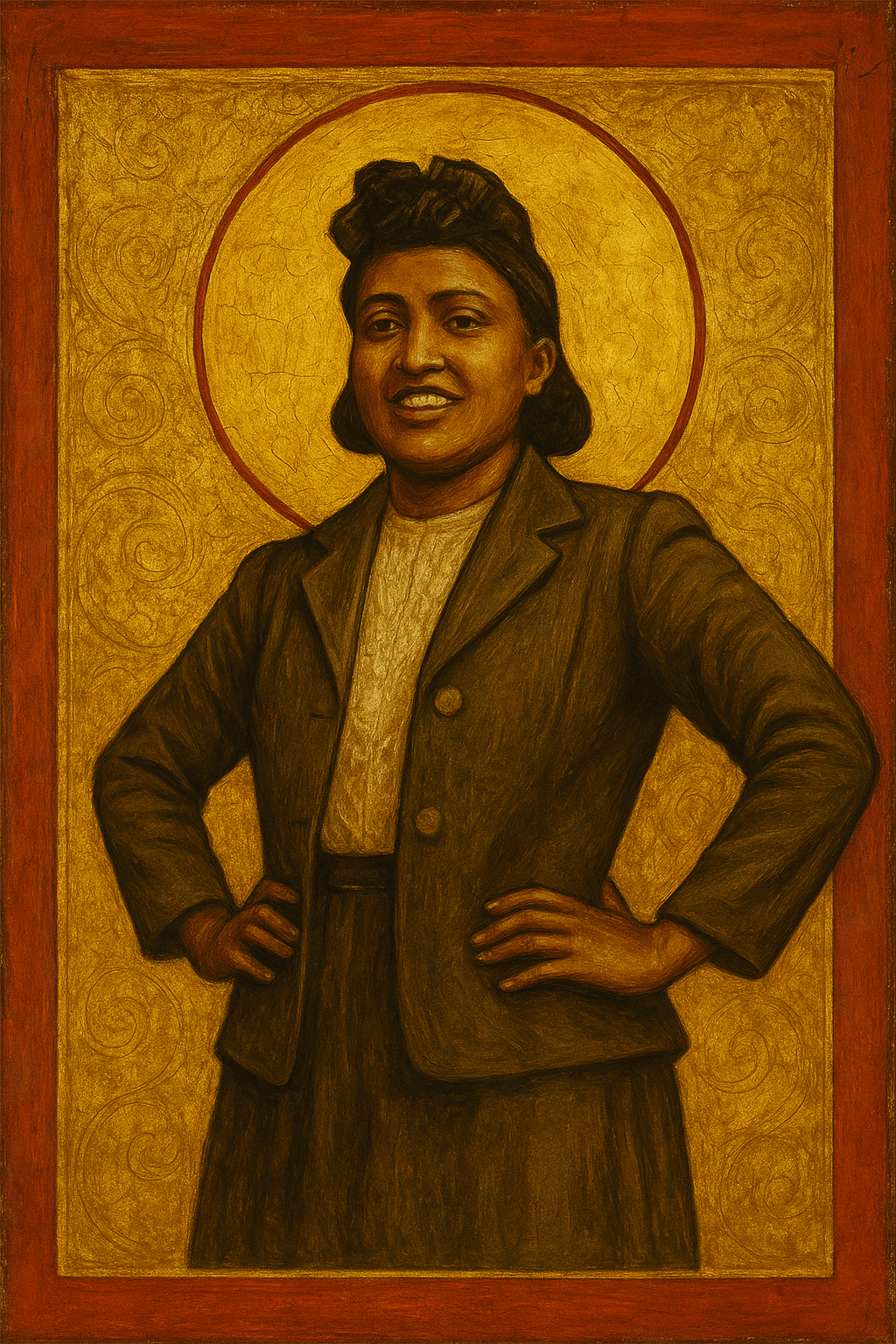IN Focus: Henrietta Lacks (August 1, 1920 – October 4, 1951)
Henrietta Lacks was a Black woman whose cancer cells—taken without her knowledge or consent at Johns Hopkins Hospital in 1951—became the world’s first immortal human cell line. Known as HeLa cells, they revolutionized science, playing a vital role in breakthroughs such as the polio vaccine, cancer treatments, IVF, gene mapping, and COVID-19 research.
Yet for decades, the woman behind the science was erased. Neither Henrietta nor her family gave permission, and they were left uninformed as her cells became a foundation of modern medicine. Her story reveals not only scientific triumph but also the ethical failures that defined how Black bodies were exploited for progress.
Honor the Legacy. Wear the Story. Grab the "Henrietta Lacks is INerasable" t-shirt from our Legacy Collection—honor history and celebrate resilience.
INerasable: Henrietta Lacks' Legacy
Henrietta Lacks is INerasable because her cells changed the world, even as she was denied the dignity of consent. Her legacy is one of both miracle and injustice: a woman who unknowingly became one of the most important contributors to medical science—and whose family had to fight to have her name remembered.
Her story exposes how systemic racism permeated even the highest institutions of science. Today, as conversations about bioethics, consent, and equity evolve, Henrietta’s name stands as a symbol of what happens when science forgets its humanity.
She is not just a source of cells—she is a mother, a Black woman, and a beacon. Henrietta Lacks did not choose her legacy, but we can choose to honor it with truth, dignity, and respect.
Art IN Context: Reverence in Neo-Byzantine Portraiture
Henrietta Lacks is depicted in the Neo-Byzantine style—traditionally reserved for saints and holy figures. This form of iconographic portraiture emphasizes divine light, symbolic geometry, and reverence, elevating Henrietta as a secular saint of science.
The artistic choice reframes her not as a passive subject but as a spiritual ancestor—a figure of power, sacrifice, and transformation. She is no longer anonymous. She is sanctified in color and form, reminding viewers that history’s most powerful women are not just remembered—they are venerated.
IN Depth: Resources to Learn More
Books & Articles
- The Immortal Life of Henrietta Lacks – Rebecca Skloot
A bestselling biography that brought her story to the forefront and exposed the racial and ethical injustices behind the HeLa legacy.
➤ https://rebeccaskloot.com/the-immortal-life/ - Henrietta Lacks: The Untold Story – Smithsonian Magazine
A deep exploration of how her legacy reshaped the ethics of scientific research.
➤ https://www.smithsonianmag.com/science-nature/henrietta-lacks-immortal-cells-6421299/ - Henrietta Lacks and HeLa Cells – Johns Hopkins Medicine
The institution’s official response and efforts toward ethical healing with the Lacks family.
➤ https://www.hopkinsmedicine.org/henrietta-lacks/ - Archives
- HeLa Genome Data Access Agreement – NIH Office of Science Policy
Outlines modern regulations for ethical data sharing in collaboration with the Lacks family.
➤ https://osp.od.nih.gov/scientific-sharing/hela-cells/ - Henrietta Lacks at the National Portrait Gallery – Smithsonian Institution
Features her official portrait and historical significance in the national artistic record.
➤ https://npg.si.edu/exhibition/new-co-acquisition-henrietta-lacks
Multimedia
- The Immortal Life of Henrietta Lacks – HBO (2017)
A powerful film adaptation starring Oprah Winfrey, based on the bestselling book.
➤ https://www.hbo.com/movies/the-immortal-life-of-henrietta-lacks - Henrietta Lacks and the Debate on Bioethics
A compelling article placing her story in the broader conversation about race and medicine.
➤ https://www.blackpast.org/african-american-history/henrietta-lacks-and-debate-over-ethics-bio-medical-research/ - Henrietta Lacks: Preserving Her Legacy | David Lacks & Veronica Robinson | TEDxFoggyBottom
A powerful talk from Henrietta Lacks grand children.
➤ https://www.youtube.com/watch?v=ggIChkFTWE8
Exploring Art Styles (Neo-Byzantine/Iconographic)
- What is Byzantine Art? – The Art Story
Introduces the symbolism, purpose, and stylistic impact of Byzantine iconography.
➤ https://www.theartstory.org/movement/byzantine-art/ - Icons and Meaning in Byzantine Art – The Met Museum
Explains how sacred portraiture has historically elevated its subjects into timeless reverence.
➤ https://www.metmuseum.org/toah/hd/byza/hd_byza.htm
IN Science. IN Consent. INerasable.


